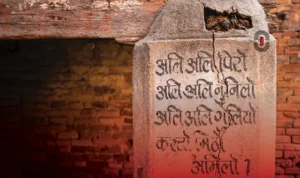The world of translation has a rich and intertwined history, with some claiming that it dates back to over 2,000 years before the common era (BCE) when the poem Gilgamesh was translated into different Asian languages.
Some of the oldest civilizations in Asia have retained their languages, while others have undergone enormous transformations. That’s why modern translation as we know it today needs to take account of these changes to ensure greater accuracy and to emphasize linguistic nuances that may easily be overlooked when translating traditional scripts.
In this article, we explore the linguistic developments and the rise and fall of Sanskrit, classical Chinese, and old Korean in the context of modern translation to better understand how we can handle this task with greater accuracy and precision.
Sanskrit
 Sanskrit is one of the oldest languages in the world. It was spoken in India as far back as 5,000 BCE. While it is still used in some contexts in India—such as religious ones—it is no longer considered a language of speech by many of the country’s people. However, there are some advocates who believe in preserving the power of the language and are attempting to revive it not by rote learning, but rather through engaged conversations and dialogue.
Sanskrit is one of the oldest languages in the world. It was spoken in India as far back as 5,000 BCE. While it is still used in some contexts in India—such as religious ones—it is no longer considered a language of speech by many of the country’s people. However, there are some advocates who believe in preserving the power of the language and are attempting to revive it not by rote learning, but rather through engaged conversations and dialogue.
While reviving a language can be hard, it also poses challenges for many translators. For example, old Sanskrit-English dictionaries of past colonial times may not have always had the right translation in mind. This often resulted in distorted meanings.
In other cases, there were simply no equivalent words in English to preserve the original Sanskrit meaning. As such, as a language that is battling for survival, linguists have a difficult time addressing such translations.
Classical Chinese
The classical Chinese language is another ancient language with a deep history dating back over 6,000 years. In fact, the foundations of classical Chinese are believed to have been established around 475-221 BCE during a period of great turmoil and conflict.
Since then, the language has undergone tremendous changes with different dynasties and ruling powers determining what should be done with the language. For example, at one stage certain Chinese characters (of which there are over 100,000, depending on the source you choose to consult), would be written in as many as 18 strokes.
While the system was later simplified with the aim of ensuring that more people could be educated and that knowledge of the written language would not just be for the elite, it still poses challenges for modern translation because of the character complexity, different meanings of characters joined together, and the fact that today, there is Romanization or Pinyin of the language, which translators must also factor in.
Old Korean
Old Korean is the language that was spoken during the period of the Three Kingdoms on the peninsula around 57 BCE. However, linguistically, Korean borrowed heavily from the Chinese language’s written system, and even Japanese, which means that certain character sets would be written in Chinese or Japanese but pronounced in Korean.
With such pronunciation and with the complexity of characters, the era of King Sejeong ushered in a time when there was a transition from old Korean to modern Korean with a simplified character system that was unique to Korea.
Of course, translating old and classic Korean texts today also poses modern translation challenges because there was great linguistic influence from the Chinese and Japanese languages. A word as simple as “water” or “mul” has deep historical and linguistic roots and influences and translators will often find that they struggle to convey the correct meaning due to the fact that there are other foreign linguistic elements present in the language.
Naturally, in modern times, there is the increased borrowing of English words, too. As such, translators undertaking a modern translation must therefore be cognizant of these features to ensure greater accuracy in translating works.
Conclusion
Translating ancient scripts for modern use in our day and age is a complex task that requires deep historical and linguistic knowledge. While modern translation tools can attempt to create an almost accurate depiction of the original text, it’s clear that the human touch and knowledge are required for such precise and difficult endeavors.
Although translating traditional Asian scripts can be a rare occurrence in our current times, modern translation can help to revive old texts and enrich our lives in profound ways as we gain a better understanding of our history and evolution as civilizations.
